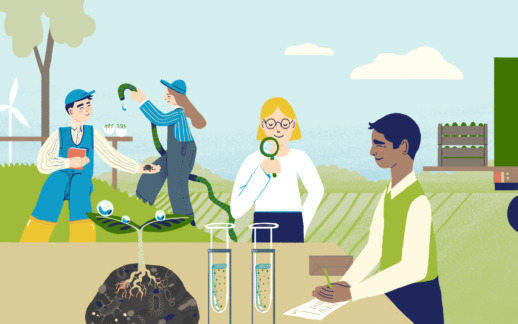The Revision of EU’s fertilizers regulation moves forward in the European Parliament
BSAG is following regulatory development related to nutrients in its Breakthrough for nutrient cycling – an ecosystem of business clusters Tekes project, started 2016. The revision of the fertilizers regulation will potentially enhance significantly nutrient recovery and reuse. All the three responsible committees have now drafted their reports on the Commission proposal. The proposed cadmium limits has raised a debate in the parliament.
The revision of EU’s fertilizers regulation was proposed by the EU Commission March 2016. In autumn 2016 the proposal proceeded to the three committees in the European Parliament including Committee on Internal Market and Consumer Protection (IMCO), Committee on the Environment, Public Health and Food Safety (ENVI) and Committee on Agriculture and Rural Development (AGRI). Each of the committees drafted a report on the proposal including amendments on it, after which the reports will be voted in the committees. The committee voting will be followed by the plenary vote, which will finalize the decision of the European Parliament. Now the reports have been published and under discussion among MEPs.
The most significant revision of the EU’s existing fertilizers regulation No 2003/2003 is the creation of a level playing field for fertilizing products including organic material and by-products. Around half of the fertilizing products used in the EU market, and especially products containing organic are excluded from the scope of current regulation. The development of fertilizers, made of recovered nutrients, would enhance nutrient recycling and thereby decrease nutrient leakage to water bodies and to the Baltic Sea.
The new revised regulation defines in its annexes the allowed components (Component Material Category) of CE-marked fertiliser products and the product functions (Product Function Category), which the CE-marked fertilizers need to respect. The variety of product function categories include for example organic fertilisers, biostimulants, growing medium and inorganic fertilisers.
The Commission proposal suggests stricter thresholds for cadmium, which occurs in high levels in phosphate rock especially in the phosphate deposits mined in Northern and Western Africa. The discussion on the regulation is at the moment highly concentrated on the cadmium threshold issue.
Next the committees will discuss the draft reports on the proposal and vote for them. Then the reports will be drawn together and voted in the plenary session. After this, the Council examines the proposal and possible amendments made by the Parliament and either approves or rejects it. Eventually the decision on the proposal will be negotiated between the Parliament, the Council and the Commission. The new regulation will enter into force in 2018, if the Parliament as well as the Council agree on the common text.
BSAG will follow closely the legislative procedure and provide up-to-date information to the members in the ecosystem project and other relevant partners.
Draft opinion of the IMCO committee:
Draft opinion of the ENVI committee:
Draft opinion of the AGRI committee:



